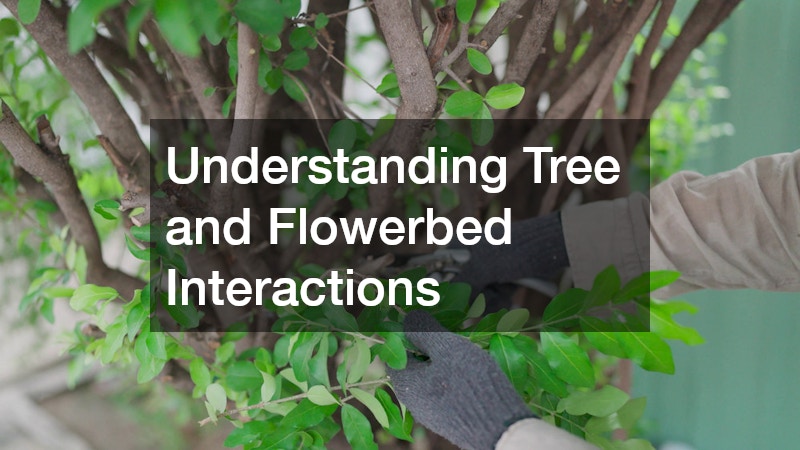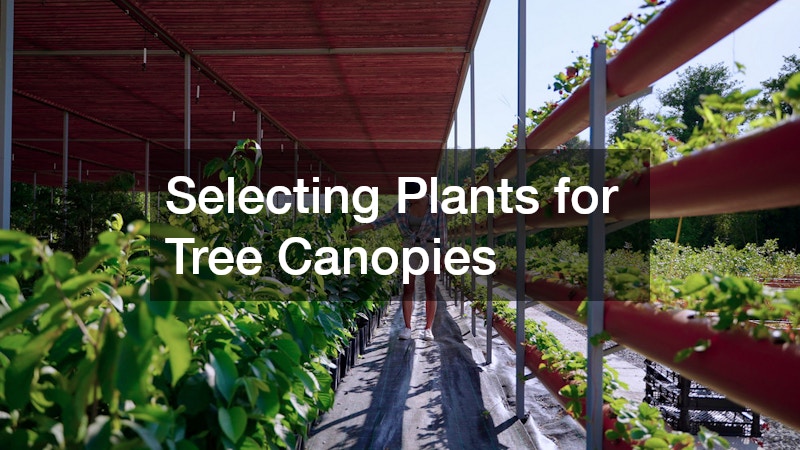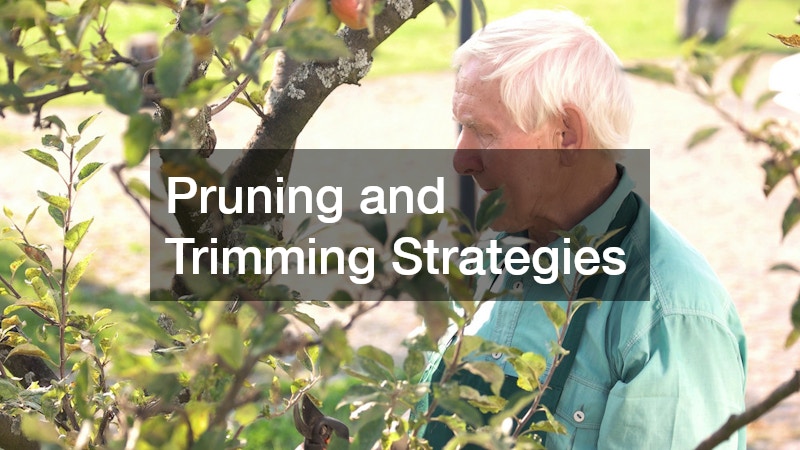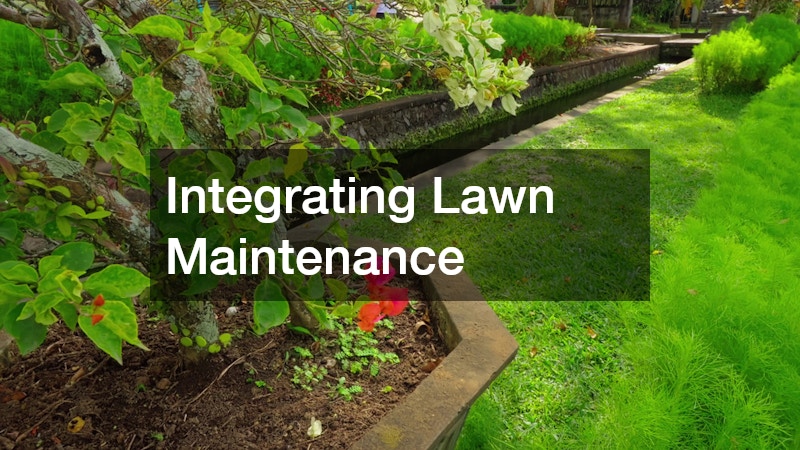Maintaining a beautiful yard requires a balance between thriving flowerbeds and healthy trees. Flowerbeds often sit beneath or near trees, creating a stunning visual contrast, but they can also present unique challenges. Factors like shade, tree roots, and soil conditions influence the health of your flowers and plants. Proper planning and maintenance can help you create a vibrant, cohesive outdoor space that showcases both trees and blooms.
To achieve this, consider how water, sunlight, and soil nutrients are shared between trees and flowerbeds. Trees often absorb a significant portion of water and nutrients, which may leave nearby flowers struggling. Strategic placement of plants, use of mulch, and regular soil enrichment can make a major difference. Additionally, keeping pathways clear and managing fallen leaves or debris ensures that your flowerbeds remain attractive and accessible throughout the seasons.
Understanding Tree and Flowerbed Interactions

Trees impact the flowerbeds around them in several ways. Their roots compete for water and nutrients, and their canopies create varying levels of shade. Some flowers thrive in partial shade, while others require full sun. Selecting the right species for your yard is essential. For example, perennials like hostas, astilbes, and impatiens often perform well under trees, while sun-loving flowers like marigolds and zinnias should be placed in open areas.
Soil conditions near trees can also vary. The soil may be more compacted due to root systems, making it harder for flower roots to grow. Regularly loosening the soil and adding organic compost can improve aeration and nutrient availability. Mulching is another critical step, as it helps retain moisture and regulate soil temperature, but it should be applied carefully to avoid smothering roots or creating conditions for pests.
Proper planning at this stage lays the foundation for a thriving yard. Understanding how your trees affect surrounding areas allows you to make informed decisions about plant selection, spacing, and maintenance routines.
Selecting Plants for Tree Canopies

Choosing the right flowers and shrubs for planting under or near trees ensures long-term success. Shade-tolerant plants like ferns, bleeding hearts, and caladiums can flourish under dense tree canopies. Conversely, trees with sparse foliage allow more sunlight, offering opportunities for a wider variety of flowering plants. Observing light patterns throughout the day helps determine which species are suitable.
In addition to sunlight, consider moisture requirements. Trees can absorb a lot of water, leaving nearby soil drier than expected. Drought-tolerant flowers such as lavender, echinacea, and sedum are ideal for areas with limited moisture. Grouping plants with similar water needs simplifies irrigation and prevents overwatering or underwatering any particular species.
A careful selection of plants also helps reduce competition with tree roots. Flowers with shallow root systems are preferable near large trees to avoid interference with deeper roots. By considering both environmental conditions and plant characteristics, you can maintain a healthy, visually appealing flowerbed that complements your trees.
Mulching and Soil Management
Mulching is essential for flowerbeds around trees. It helps retain soil moisture, suppress weeds, and provide a neat appearance. Organic mulches like shredded bark, pine needles, or composted leaves gradually improve soil quality as they decompose. However, it’s important to avoid piling mulch directly against tree trunks, which can encourage rot or insect infestations.
Proper soil management extends beyond mulching. Flowerbeds near trees often require additional nutrients due to competition with roots. Adding compost, slow-release fertilizer, or organic amendments supports plant growth. Regular soil testing can help determine deficiencies in nitrogen, phosphorus, or potassium, ensuring that both trees and flowers receive adequate nourishment.
Aeration is another vital practice. Compacted soil around trees can limit water absorption and root expansion for flowerbed plants. Lightly loosening the topsoil or using an aeration tool helps improve drainage and encourages healthy root development. Combining these techniques creates a balanced environment where trees and flowers thrive together.
Pruning and Trimming Strategies

Pruning plays a crucial role in maintaining both tree health and flowerbed vitality. Removing dead or diseased branches improves air circulation and sunlight penetration, benefiting the flowers below. Strategic pruning also prevents heavy shade from hindering plant growth. While minor pruning can be done by homeowners, consulting a professional arborist ensures proper techniques and tree safety.
Tree trimming is especially important for large or mature trees. By shaping the canopy, you can create more uniform light exposure across your flowerbeds. Regular trimming also reduces hazards, like falling branches, which can damage delicate plants or create unsightly debris. Scheduling pruning during dormant seasons minimizes stress on the tree while allowing flowers to recover from seasonal growth patterns.
For extensive or complex trees, professional tree services may be necessary. They bring expertise and equipment to handle large branches safely. Maintaining a consistent pruning and trimming schedule keeps both your trees and flowerbeds healthy and visually appealing.
Managing Tree Removal and Stump Grinding
In some cases, tree removal may be necessary to protect or expand flowerbeds. Trees that are diseased, dead, or poorly positioned can interfere with plant growth or pose safety risks. Professional tree removal ensures the process is conducted safely, minimizing damage to surrounding flowers and structures.
After a tree is removed, stump grinding is often required to prevent regrowth and free up space for new flowerbeds. Stump removal also improves aesthetics and makes mowing or other lawn maintenance easier. Grinding down the stump leaves a smooth surface suitable for planting new flowers or shrubs. Working with an experienced service provider ensures that removal and grinding are completed efficiently and without impacting nearby vegetation.
Planning ahead for tree removal or stump grinding allows homeowners to transition seamlessly to a refreshed yard design that prioritizes both beauty and safety.
Integrating Lawn Maintenance

Flowerbeds do not exist in isolation—they interact with lawns and surrounding greenery. Effective lawn maintenance complements flowerbeds by providing a clean, healthy frame for your garden. Regular mowing, edging, and fertilising ensure that the grass does not encroach on your plantings. Proper watering practices keep both lawns and flowerbeds hydrated without creating over-saturated areas.
Consider the impact of roots on the lawn. Trees may compete with grass for nutrients and moisture, leading to patchy growth near flowerbeds. Adjusting fertiliser schedules and applying soil amendments helps address these challenges. Additionally, keeping pathways clear of debris allows easy access for ongoing lawn care and flowerbed maintenance.
Combining flowerbed care with consistent lawn maintenance promotes a cohesive, lush yard that highlights both your trees and your flowering plants.
Pest Control Around Trees and Flowers
Pests can threaten both trees and flowerbeds. Common garden pests include aphids, caterpillars, and beetles, which may damage leaves, stems, or flowers. Proper pest control strategies are essential to maintain healthy plantings. Early detection and treatment prevent infestations from spreading to trees or flowerbeds.
Additionally, keeping flowerbeds mulched and debris-free helps deter pests. By integrating pest control into your regular yard maintenance, you safeguard both the aesthetic appeal and the health of your garden.
Working with local exterminators or implementing eco-friendly solutions helps manage pests safely. Techniques such as targeted sprays, neem oil treatments, or beneficial insects can protect your garden without harming the surrounding environment. Monitoring plants regularly ensures that any pest activity is addressed promptly, reducing long-term damage.
Hiring Professionals for Tree and Yard Care
While homeowners can handle routine tasks, professional support is often invaluable. Certified arborists provide expertise in tree pruning, trimming, and removal, ensuring that interventions are safe and effective. Tree services offer comprehensive care for large or challenging trees, preventing damage to flowerbeds during maintenance.
Professional guidance can also improve the efficiency of lawn maintenance and pest control. Specialists can assess soil health, identify plant stress, and recommend targeted solutions. Engaging experienced tree nurseries may help when selecting new trees or flowers that complement existing plantings and environmental conditions.
Investing in professional support saves time, reduces risks, and ensures that both trees and flowerbeds receive optimal care. A well-maintained yard becomes a source of pride and enjoyment for homeowners throughout the year.
Seasonal Maintenance Tips
Seasonal adjustments are key to maintaining flowerbeds around trees. Each time of year brings unique environmental conditions that directly impact both tree health and flowerbed vitality. In spring, homeowners should prioritize soil preparation, planting new flowers, and pruning trees to encourage robust growth. Spring is also the ideal time to assess any damage from winter weather, repair compacted soil, and visit your local tree nursery to select new trees or shrubs that will complement your existing flowerbeds and provide seasonal interest throughout the year.
Summer requires more attentive care, as heat and fluctuating moisture levels can stress plants. Consistent watering is essential, especially for flowers that sit beneath trees, where rainfall may be partially blocked by dense canopies. Mulching can help retain soil moisture and keep roots cool. Regular monitoring for pests, including insects and fungal issues, allows homeowners to address problems before they become severe. Additionally, tree trimming services can help manage not just tree health but also help manage shade to ensure that sun-loving flowers receive sufficient light during long summer days.
Fall provides an opportunity to prepare flowerbeds for winter dormancy while maintaining tree health. Leaf cleanup is a critical step, as fallen leaves can smother flowers or create breeding grounds for pests. Fertilising both flowers and trees before the first frost supports nutrient storage and promotes strong root development. This is also a great time to prune lightly and remove any diseased branches, reducing the risk of winter damage. Winter maintenance focuses on protection and planning. Some flowers may need covering or relocation to shield them from frost, while applying a fresh layer of mulch can insulate roots and maintain soil moisture.
Designing for Long-Term Success
Long-term success in flowerbed maintenance involves careful planning, close observation, and a willingness to adapt as conditions change. It’s not just about planting flowers and leaving them to grow; it requires strategic decisions about plant placement, spacing, and companion planting to ensure that trees and flowers can coexist without competing for water, nutrients, or sunlight. Proper soil management, including aeration, composting, and mulching, provides a healthy foundation for plant growth, while targeted pruning and routine pest control help maintain the overall balance of your garden. Engaging professional support for complex tasks, such as tree removal, ensures that interventions are safe and effective while minimizing disruption to surrounding flowerbeds.
Documenting your maintenance routines and monitoring plant health over time provides invaluable insight into what works best for your yard. Keeping notes on watering schedules, fertiliser applications, seasonal changes, and any signs of stress or disease helps homeowners adjust their care plans proactively. Flexibility is key—plants grow, environmental conditions shift, and trees mature, altering light patterns and soil composition. By regularly assessing these changes and making small adjustments to your flowerbed care practices, you can prevent long-term problems and support sustained growth.
Planning for the future also involves considering aesthetics and function. Think about how your flowerbeds will evolve over multiple seasons and years, factoring in the mature size of trees, the bloom cycles of flowers, and potential shade changes. Incorporating layers of plants, seasonal rotations, and focal points ensures your yard remains visually appealing while providing the necessary resources for all plants to thrive. Even simple decisions, like leaving space for new plantings or pathways, can make a significant difference in usability and overall harmony.
Consistency and persistence are essential components of long-term success. A well-maintained yard does not happen overnight; it is the result of small, repeated actions, attention to detail, and learning from past experiences. Regular mulching, monitoring for pests, pruning, and soil care, combined with periodic professional evaluations, helps both trees and flowerbeds flourish together. Over time, these efforts create a vibrant, sustainable outdoor space that not only enhances the visual appeal of your property but also promotes ecological health, reduces maintenance stress, and fosters a deeper connection to your garden.
Ultimately, long-term flowerbed maintenance is about creating a balanced ecosystem where trees, flowers, and other plants support one another rather than compete. By investing effort upfront, documenting progress, and remaining adaptable to change, homeowners can cultivate a beautiful, resilient yard that continues to thrive year after year. With thoughtful planning, informed decision-making, and consistent care, your outdoor space can become a showcase of natural beauty that highlights the strengths of both trees and flowerbeds, offering enjoyment and value for many seasons to come.
